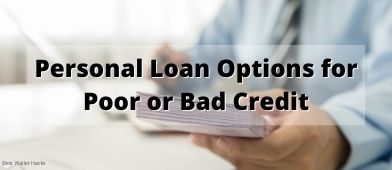When I graduated college, I had about $25,000 in student loan debt.
The vast majority were low-interest Stafford Loans but I had a higher interest Perkins Loan.
I knew that the fastest way to pay down my loans was to tackle the highest interest rates first and then moving towards the lower interest ones.
It’s a matter of simple math.
Smart Wallet Hackers know, however, that sometimes the best way isn’t always the “mathematically optimal” way. Personal finance is as much personal as it is finance and human psychology often gets in the way of our best intentions (think about those desserts you eat late at night when you think no one is watching!).
That’s why we always say the best way, fastest way, the Wallet Hacker Way is the one that works.
Table of Contents
Conventional Math Way
Everyone who can compare numbers knows that you pay off the higher interest rate debt first. It’s as simple as that.
If you do it any other way, it’s not the cheapest (lowest paid interest) way.
But is it the best way?
If you think you can do it – this is the best way.
But for many people, it’s not that easy. For some, the debt snowball may be better.
Debt Snowball
Let’s say you don’t think you can do it or you’ve been doing it this way and you feel stagnant. Give the debt snowball a try.
Popularized by Dave Ramsey, the debt snowball is a magically simple concept.
Pay the minimums on every debt you have and then apply the extra to your smallest debts first. When that debt is retired, apply that money to the next smallest debt. Your payments snowball because you pay the same each month, you’re knocking out debts faster and faster. You scratch that debt off the list, you see progress, and now you are inspired to work even harder.
That’s psychology.
Let’s say you have three debts, $500 @ 3%, $2,000 @ 5% and $5,000 at 15%.
Conventional wisdom says you pay off the highest interest debt first, the $5,000 beast, and then work down to the $2,000 and then the $500.
Snowball says you battle the $500 first, the one you’re going to knock out first, and then apply those payments to the $2,000 debt. After you knock out the $2,000, apply the payments towards the $5,000 monster.
If you did the reverse, in that same amount of time, you’d only have half of the $5,000 (roughly) done and still have three bills in your mailbox each month. You’re making optimal financial progress but it doesn’t feel like it. It feels like you still have three debts and they’re crushing you.
The best way is the way that works. If you’re struggling, this is worth a try.
How much does the debt snowball cost?
It depends on your payments and the relative interest rates.
Let’s take that three debt situation again ($500 @ 3%, $2000 at 5%, and $5000 at 15%) and you can pay $500 of debt in a year.
Without getting too precise on the arithmetic, it’ll cost you the difference in interest on $500 between the highest interest rate debt (what math would tell you to pay first) and the smallest loan amount (what debt snowball tells you to pay).
That’s 12% of $500 or $60.
$60 ain’t bad to keep you on track.
Don’t stop there!
When you do pay off your debt, don’t stop!
You can now take those payments and turn them into a wealth snowball. You’ve come so far, now it’s time to really build wealth and cash in on these great habits you’ve developed.




April Cook says
I like the idea of using the debt snowball method to pay off loans. I took out a few loans to help me through a hard time, and I’m grateful I had that option. Now that I am more financially stable I am trying to pay them off. I think it would be more motivating to use the snowball method and see those debts disappearing. Thanks for sharing this!
Derek says
Doesn’t the math actually say that you should pay off the one that costs you the most in interest each month? That may not be the one with the highest interest rate.
No, it’s the one with the highest interest rate because that’s the one where the loan is costing you the most relative to its balance. The one with the highest interest payment may feel like it’s the most expensive, since it’s the convergence of both balance and interest rate, it’s not because the “expensive” one is growing faster.